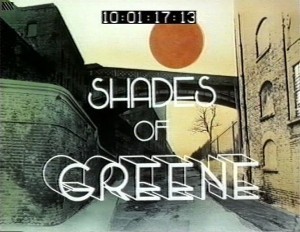A lifetime of television viewing often encourages me to make unlikely connections. Consider the wildly successful ‘Most Interesting Man in the World’ advertising campaign for Dos Equis beer (2007-present) produced by the multinational integrated marketing agency, Euro RSCG Worldwide. The first time I saw one of these adverts in the late 2000s, I must admit I was confused. I asked myself what was the point of these commercials and who were they targeted at? (I later found out it is males 18 to 34.) They star American TV journeyman actor, Jonathan Goldsmith, who acknowledges that he based his characterization on the Argentine-born 1940s Hollywood heartthrob Fernando Lamas.
Lamas also inspired Billy Crystal’s celebrity interviewer of ‘Fernando’s Hideaway’ on Saturday Night Live, a recurring skit that debuted in the 1984-1985 television season. Like the protagonist in the Dos Equis ads, Crystal’s Fernando is an extravagantly obsequious Latin playboy (‘You look . . . mahvelous!’) who in the immortal words of SNL’s Bill Murray is mui macho when stacked up against his Hollywood rivals, Ricardo Montalban and Desi Arnez. Goldsmith’s ‘Most Interesting Man’ is only slightly less exaggerated than Crystal’s creation. He is a mildly irksome, goofy burlesque of the postwar masculine ideal (‘He wouldn’t be afraid to show his feminine side . . . if he had one’).
The ‘Most Interesting Man in the World’ is moreover the flipside of the more button down, melodramatic Don Draper of Mad Men (AMC, 2007-present) in the similarly contemporaneous narrative targeted more at my own demographic cohort. I bring up Don Draper because he is one of today’s signature representations of the archetypal postwar American male under siege. Supposedly Billy Crystal initially conceived of ‘Fernando’ while watching the eponymous actor on one of his many The Tonight Show Starring Johnny Carson (NBC, 1962-1992) guest appearances when he told the host that ‘it is better to look good than to feel good.’
These ‘words to live by’ immediately struck a responsive chord with Crystal circa 1983, while likewise embodying the behavioral blueprint followed by Don Draper in the current Mad Men narrative. The fifth season of the AMC series just ended on June 9. Don fared much better this year than he did in season four when he seemingly hit rock bottom after vomiting all over himself in the Sterling Cooper Draper Pryce men’s room in ‘The Suitcase’ (4:46). True to Lamas’ dictum, Don still looked remarkably handsome with only a small stain on his white dress shirt after throwing up with his head in the toilet. What else would we expect from the ‘Most Interesting Man’ on Mad Men?

Interestingly, John Hamm auditioned a half-dozen times for the role of Don Draper before finally being cast since there was a ‘reverse prejudice’ towards him at the time because of his striking good looks and ‘old-fashioned masculinity,’ recalls Alan Taylor, the director of the pilot episode. When creator Matt Weiner and the rest of the creative team first saw Hamm in full costume with his hair cut short and combed 1950s-style, remembers Taylor, they all realized that it was fortuitous ‘to cast sort of the perfect male in this part because what we were doing in the show was basically deconstructing’ that traditional postwar masculine ideal.
Which brings me to another related connection from the annals of U.S. television history. Recently on May 14, public television in the States premiered ‘Johnny Carson: King of Late Night’ as the latest installment of the PBS flagship series, American Masters (1986-present), which over its long run has intermittently featured iconic figures from TV (Lucille Ball, Carol Burnett, Walter Cronkite, Edward R. Murrow, and Rod Serling, among one or two others), but not very often. To be honest, I hadn’t thought much about Johnny Carson since he retired in 1992, other than the once or twice he was tangentially related to some writing assignment I was completing.
Then keeping up with the weekly rollout of Mad Men on May 27, Don comes home late one night in ‘The Other Woman’ (5:63) after a particularly frustrating day at Sterling Cooper Draper Pryce and tells his new younger wife, Megan, that he ‘was going to watch Carson and cry [himself] to sleep.’ The episode is set in early 1967, and I instantly thought to myself that of course Don would be attracted to Johnny and use his show to unwind. At that point of the Sixties, they were basically going through the same kind of struggle to stay relevant after nearly a decade of being the coolest guy in any room they stepped into.
In 2012, being a modish trendsetter and in vogue are not usually descriptions associated with Johnny Carson. Still, seeing him through the lens of Mad Men, I suddenly remembered that the early Johnny—say around 1962 to 1968—was a late-night hipster to my parents’ generation as well as my two brothers who are six and eight years older than me. My siblings were the ones who introduced me to Johnny when I was an adolescent and in my early teens. At that age, Johnny Carson on The Tonight Show provided me a glimpse into the adult world of booze, sex, and urban sophistication. Johnny also knew anyone who was anyone on the contemporary cultural scene during that era and he brought them into our homes and collective consciousness on a weekly basis Monday through Friday.
In retrospect, Mad Men threw Johnny Carson into stark relief for me all these years later. I was struck by how similar Johnny Carson was to Don Draper. Both were urban sophisticates masking a rural family background whose dysfunction drove them throughout their lives. Both were always Gentlemen’s Quarterly attired (Johnny even hadhis own clothing line), intensely private, impeccably polite, and fast on their feet as they ad libbed moment to moment on the job. Johnny was also a chain smoker (which was the root cause of his death at 79), a heavy drinker all his life (his jokes in this regard were at the expense of his gregarious Irish-American sidekick, Ed McMahon, but Ed was always the one who brought a blind drunk Johnny home), and a serial philanderer (Johnny ended up with four wives and three divorces).

I strongly recommend Emmy-winning filmmaker, Peter Jones’ two-hour ‘Johnny Carson: King of Late Night’ for anyone interested in the history of television in the United States. Johnny’s impact on American society and culture via TV was unrivalled in his lifetime and the only contemporary analog I can think of is Oprah Winfrey. He was a fixture of national life for thirty years on The Tonight Show (comprising 4,531 episodes and 23,000 guests). Through most of that run, the program averaged fifteen million viewers a night and accounted for fifteen to twenty percent of NBC’s annual profits. He became the iconic TV entertainer and personality for the World War II and silent generations, comparable to Frank Sinatra in music and John Wayne on film.
Johnny Carson was more accessible than Sinatra and Wayne, however, being a television rather than a movie star. In his early years on The Tonight Show, he transported viewers back to a hip, happening New York nightspot, somewhat evoking the attitude and ambiance of Steve Allen’s original Tonight!(1954-1957), only this time Sixties’ style. His chic, racy appeal was such that at the time he was offered and turned down the lead role in The Thomas Crown Affair (1968), later given to Steve McQueen. He was once Draperish in style and impact, but like Don grew progressively passé to a younger generation as his show congealed into a predictable template of an opening monologue, well-worn skits, and two or three guest celebrities on every episode.
For a brief time in the early to mid-1960s, though, Johnny was the ‘Most Interesting Man in the World’ of U.S. television. He was rat pack cool but relatable to middle America. He was his audience’s ticket to all things current, glamorous, and sophisticated. Just as today’s ‘Most Interesting Man in the World’ is an inside joke meant to flatter the young male demographic that laughs at this anachronistic role model while still secretly holding fast to the adolescent fantasy it’s built on. For members of my generation in our childhood, Johnny Carson was our fathers’ cool out-of-town friend. Instead of having a nightcap like the adults, we could sneak downstairs, turn on the TV, and imagine what it would be like to be Johnny Carson.
Gary R. Edgerton is Professor and Dean of the College of Communication at Butler University. He was previously Eminent Scholar, Professor, and Chair of the Communication and Theatre Arts Department at Old Dominion University. His latest books are Westerns: The Essential Journal of Popular Film and Television Collection with Michael T. Marsden (Routledge, 2012) and Mad Men: Dream Come True TV (I.B. Tauris/Palgrave Macmillan, 2011), while The Sopranos is forthcoming in March 2013 from Wayne State University Press as part of its TV Milestones series. He also coedits the Journal of Popular Film and Television.





